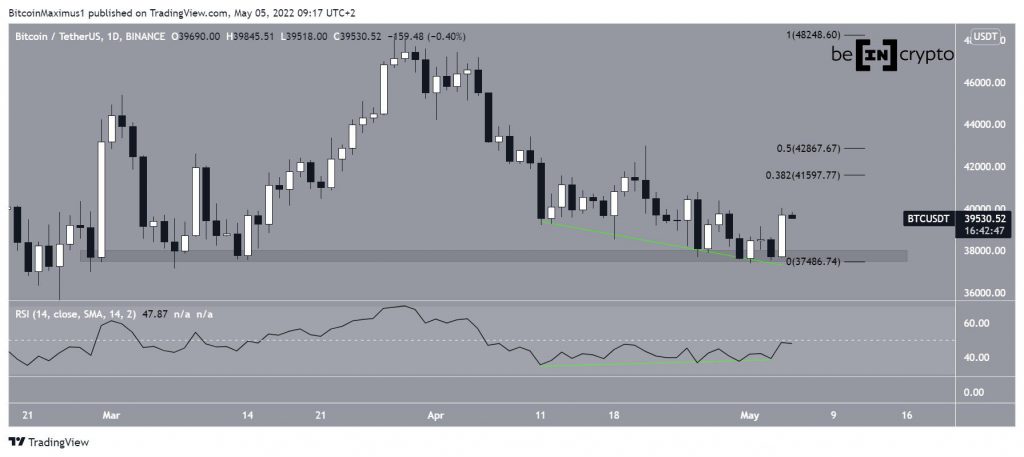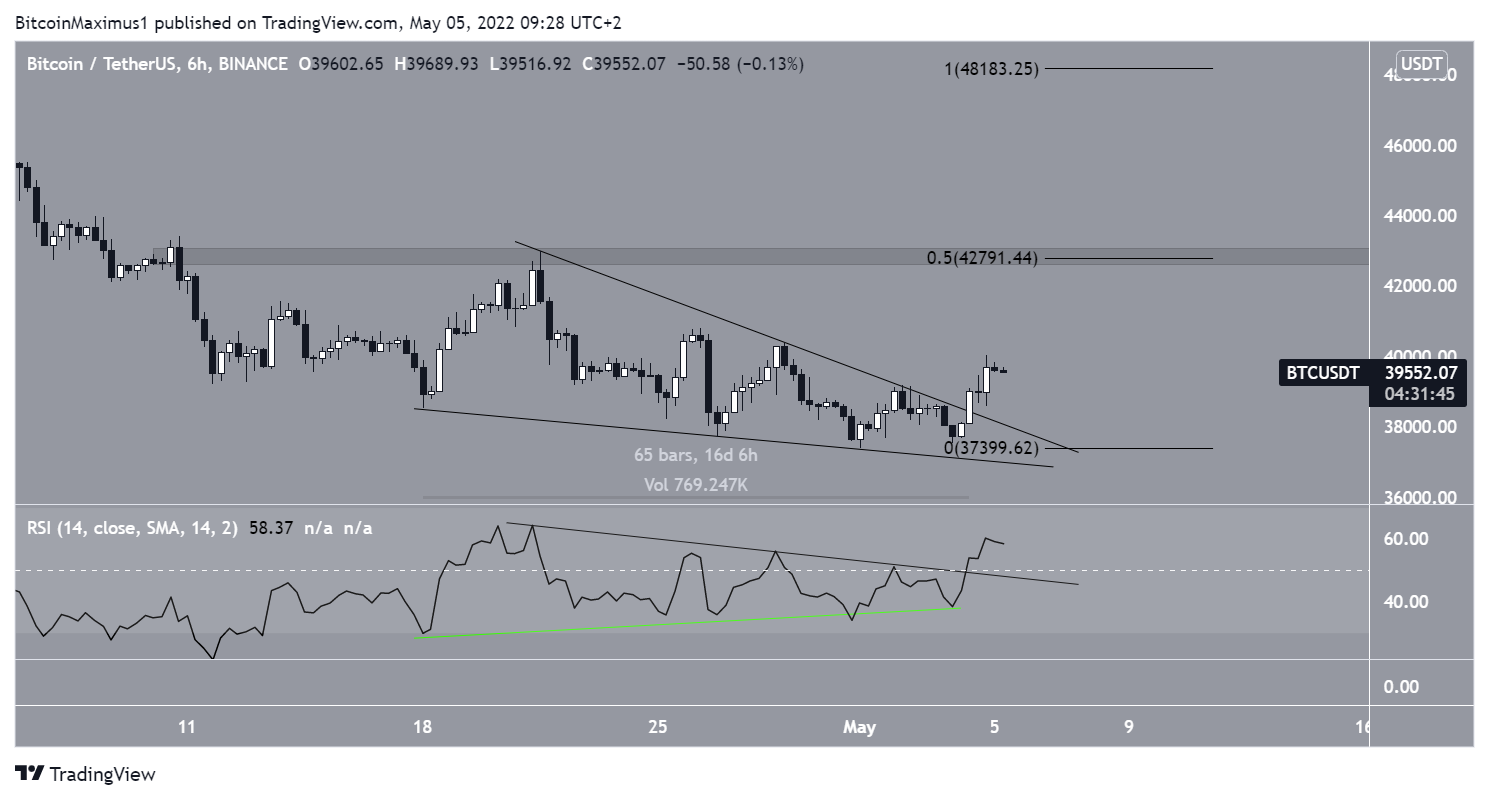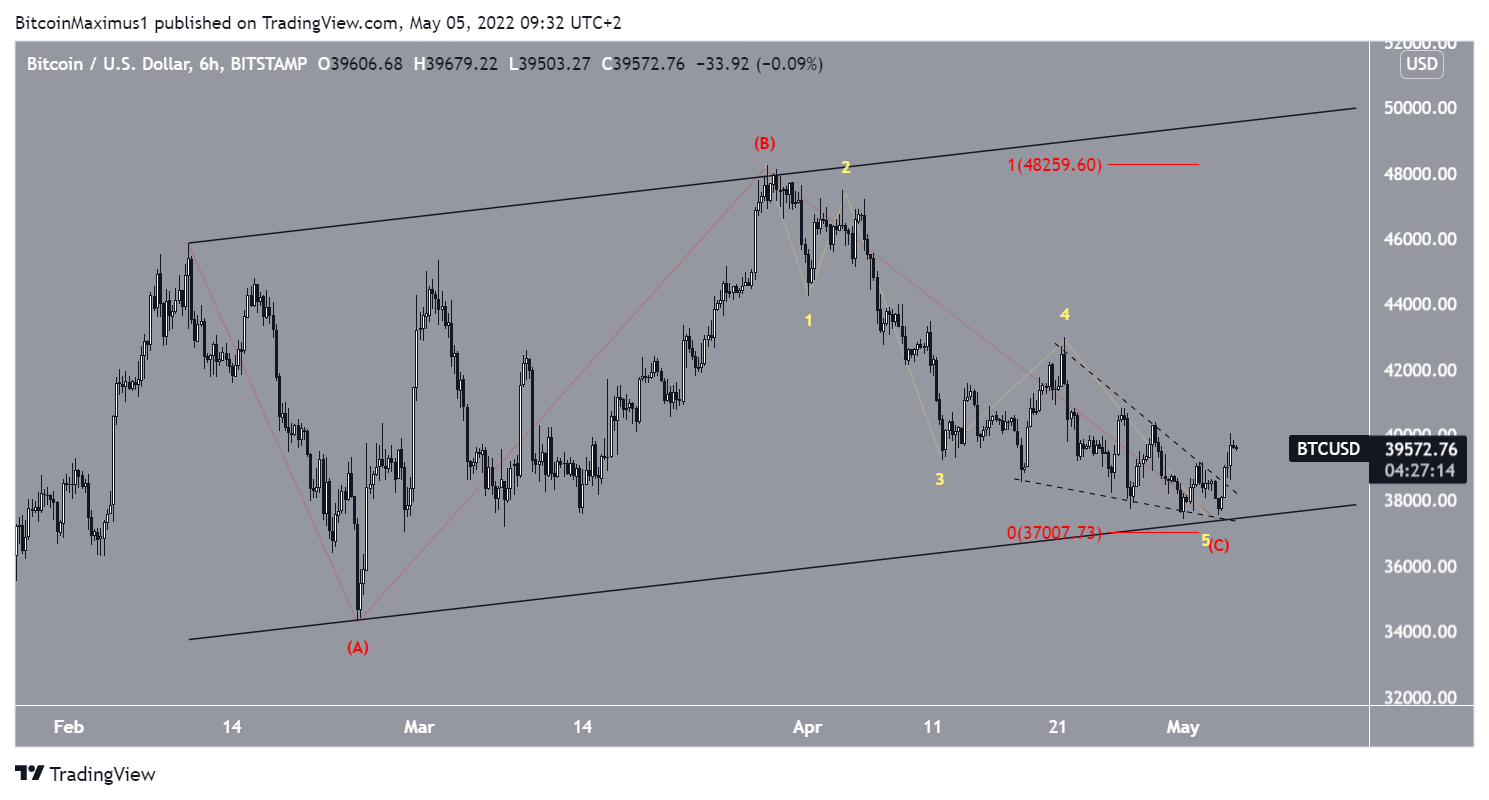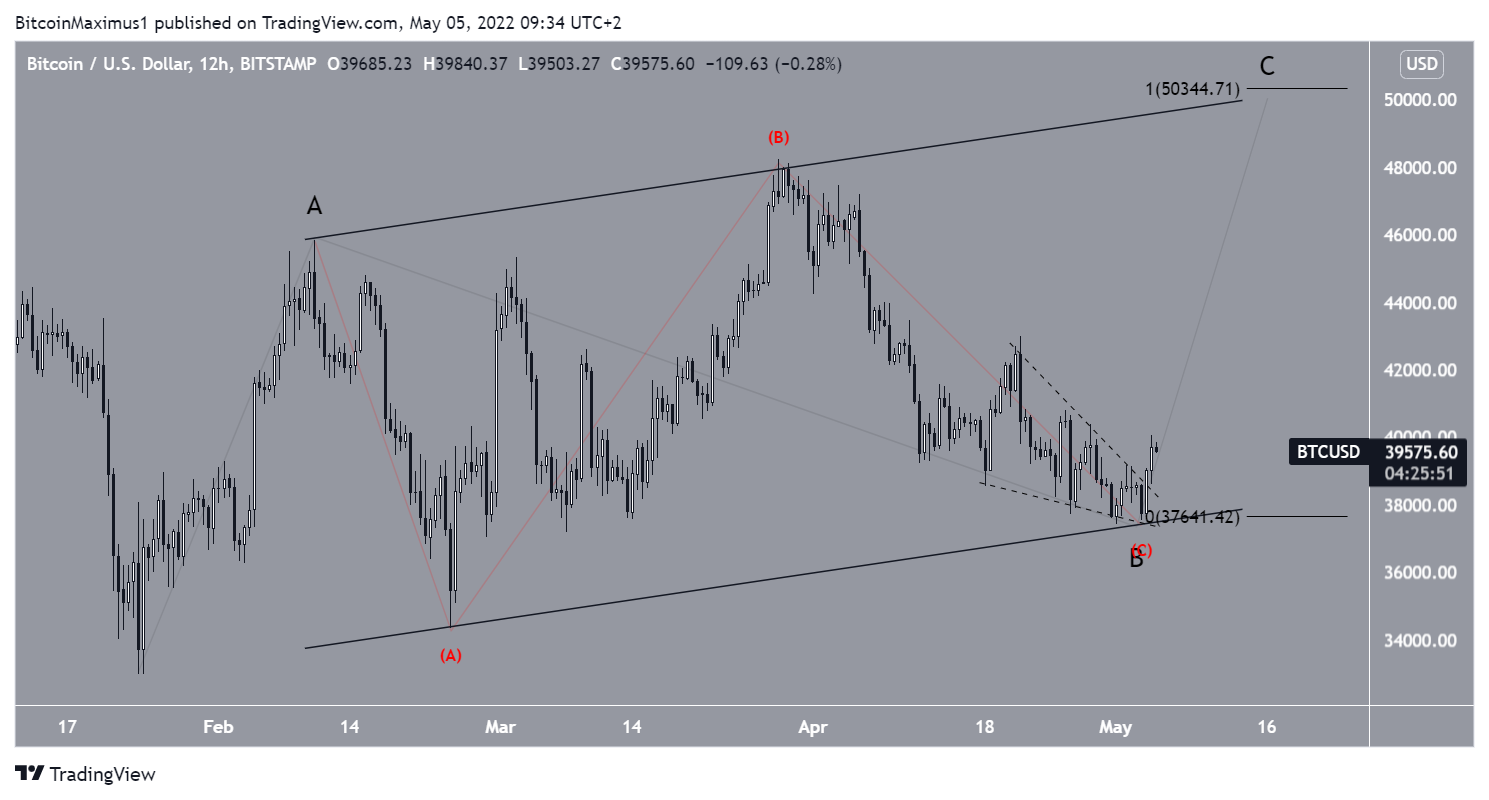Bitcoin (BTC) increased by more than 5% on May 4 and broke out from a descending wedge that had been in place since April 18.
Bitcoin has been gradually decreasing after being rejected at $43,000 on April 21 and reached a local low of $37,386 on May 1.
Throughout the entire downward movement, the RSI has generated a considerable bullish divergence (green line).
On May 5, BTC increased considerably and created a bullish engulfing candlestick, briefly moving above $40,000. The rebound took place after the bullish divergence played out and served to validate the $37,800 horizontal support area.
The closest resistance area is found between $41,600 and $42,850. This target range is the 0.382-0.5 Fib retracement resistance levels when measuring the entire drop since March 28.
BTC breaks out from wedge pattern
The six-hour time frame shows that BTC had been decreasing inside a descending wedge since April 18. The descending wedge is often considered to be a bullish pattern, meaning that it leads to a breakout the majority of the time.
Similar to the daily time frame, the RSI generated a bullish divergence prior to the May 4 breakout. Before this, BTC had been trading inside the wedge for nearly 17 days. Alongside the positive price action, the RSI also broke out from its descending trend line.
The previously outlined top of the resistance range at $42,800 is also a horizontal resistance area, increasing its validity.
Wave count analysis
The wave count suggests that BTC has completed an A-B-C corrective structure (red). In it, waves A and C had a 1:1 ratio. The sub-wave count is shown in yellow in the chart below and suggests that sub-wave five developed into an ending diagonal, hence the wave shape.
If true, a rapid upward move that clears the highs of the wedge would be likely.
If the long-term wave count plays out, BTC could increase to $50,350. This would give the longer-term waves A and C a 1:1 ratio.
For BeInCrypto’s previous Bitcoin (BTC) analysis, click here
Disclaimer
All the information contained on our website is published in good faith and for general information purposes only. Any action the reader takes upon the information found on our website is strictly at their own risk.





